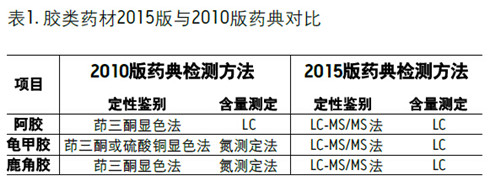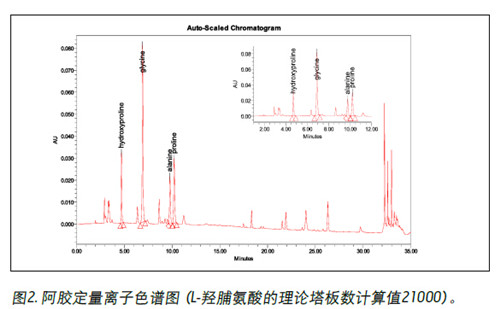Background introduction
Glue medicinal materials are traditional Chinese medicines with typical ethnic characteristics, and gelatin substances made from animal skin. The 2015 edition of the Chinese Pharmacopoeia contains three kinds of gums, namely gelatin, tortoise shell glue and antler gum. Regardless of the type of skin, the collagen becomes a peptide with a smaller molecular weight after hydrolysis, thereby losing the properties of the original collagen and failing to identify the source. The Pharmacopoeia of 2015 revised the qualitative methods of Ejiao, Tortoise Gum, and Antler Glue. The method of liquid-mass spectrometry was used to detect the characteristic peptides. The method was more scientific and reliable. At the same time, the quantitative analysis method of tortoise gum and antler gum was also modified. , from the previous nitrogen determination method to liquid chromatography.

Results and discussion
Waters ® developed a stable, fast, and sensitive LC-MS/MS method for qualitative identification, and reproduced the method for determining the content of tortoise shell gum and staghorn gum LC. The qualitative results of HPLC and UPLC ® schemes show that the signal-to-noise ratio of gelatin, tortoise shellac and staghorn gum is greater than 100, and the signal-to-noise ratio of 631.3 > 546.4 channel of tortoise shell gum is greater than 38000, which fully meets the requirements of the 2015 Pharmacopoeia signal-to-noise ratio of 3:1. (Figure 1 is the gelatin qualitative ion chromatogram); quantitative results show that: L-hydroxyproline, glycine, alanine, L-proline derivatives are more than 1.5, while L-hydroxyproline Calculated, the number of theoretical plates is greater than 21,000, far greater than the pharmacopoeia. (Figure 2 is a gelatin quantitative ion chromatogram).

Data acquisition and analysis with Empower ® 3 software takes data integrity, application security and audit trail to a whole new level. The ACQUITY UPLC ® H-Class system enables seamless conversion of HPLC and UPLC separations, retaining the flexibility and ease of use of current HPLC, while also enabling the high efficiency separation provided by UPLC for central quality monitoring. The series stability and sensitivity of the ACQUITY TQD and Waters' latest solid core particle technology column CORTECS C 18 provide the best performance for this configuration. The system can also be used for pesticide residue detection, Chinese herbal medicine pigmentation and toxin detection, fully meeting the 2015 Pharmacopoeia requirements for pesticide residues, pigments and toxins.

in conclusion
The ACQUITY UPLC H-Class TQD system was used to reproduce the qualitative and quantitative methods for the three kinds of gelatin materials, such as gelatin, tortoise gum and antler gum, which were collected in the 2015 edition of the Pharmacopoeia. The results showed that the gelatin, tortoise gum and antler gum letters were used. The noise ratio and theoretical plate number fully meet the requirements of the pharmacopoeia and can be completely reproduced.
Ordering Information
product description | Item number |
ACQUITY UPLC H-Class | 176015007 |
TUV UV detector | 176015028 |
TQ detector | 176001263 |
CORTECS C 18 , 2.7 μm, 2.1mm x 100mm | 186007367 |
Empower 3 | 176002203 |
Folding Half Face Mask,Disposable Face Cover for Self Use,Medical Kn95 Face Mask,Anti-fog Haze Dust Proof Face
Dongguan Keyutai Mask Co., Ltd. , https://www.maskkytai.com